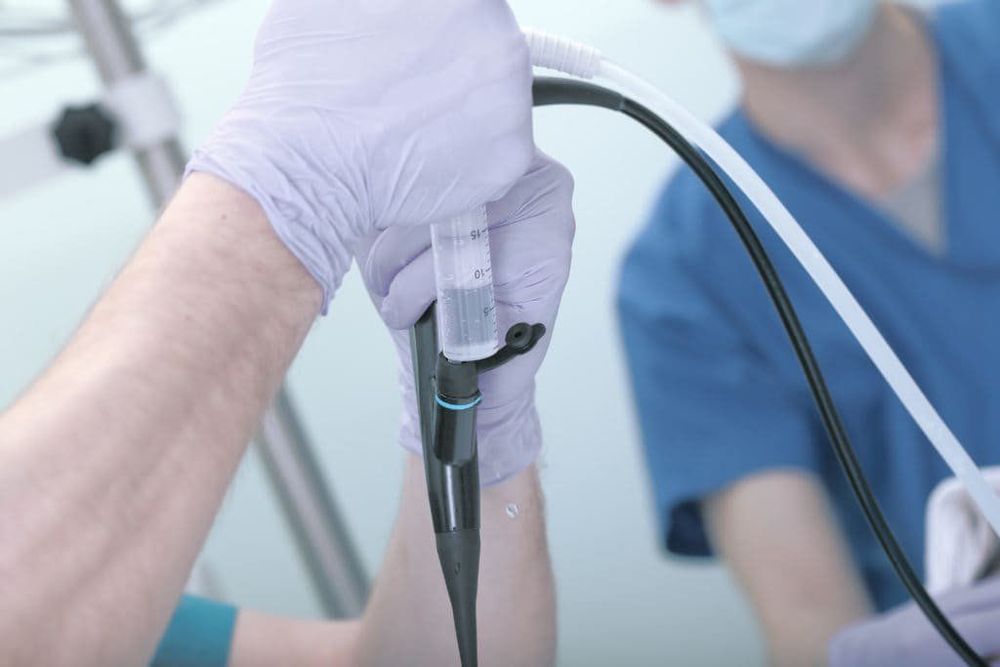This is an automatically translated article.
The article was written by Specialist Doctor I Nguyen Thi Minh Thuyen - Pathologist, Pathology Department - Vinmec Danang International General Hospital.Once cervical cancer is diagnosed, doctors try to find out if it has spread, and if so, how far, this is called staging. Cancer stage describes how far the cancer has spread in the body. It helps determine the severity of the disease and how best to treat it.
Staging is one of the most important factors in deciding how to treat cervical cancer and can determine the likelihood of successful treatment.
1. Determining the stage of cervical cancer
To determine the stage of cancer after a diagnosis of cervical cancer, doctors try to answer the following questions:How far has the cancer grown to the cervix? Has cancer spread to nearby structures? Has cancer spread to nearby lymph nodes or to distant organs? The FIGO (International Federation of Gynecology and Obstetrics) staging system is most commonly used for cancers of the female reproductive organs, including cervical cancer. For cervical cancer, clinical staging is based on the results of a physical exam, biopsies, imaging tests, and in some cases other tests, such as cystoscopy and colonoscopy. rectum. It is not based on what is found during surgery. If surgery is performed, disease staging can be determined at surgery, but it does not change the clinical stage. Your treatment plan is based on the clinical stage.

Soi bàng quang giúp chẩn đoán ung thư cổ tử cung
2. Cervical cancer stage is classified from stage I (1) to IV (4)
As a rule, the smaller the number, the less the cancer has spread. A higher number, like stage IV, means the cancer is more advanced. And in a period, the first letter means the lower stage.Cervical cancer staging can be complicated, if you have any questions about the stage, you can ask your doctor to explain it in a way you understand.
2.1 FIGO . Stage
Stage I Cancer cells have grown from the surface of the cervix into the deeper tissues of the cervix. Cancer has not spread to nearby lymph nodes. Cancer has not spread to distant organs.
IA
There is a very small amount of cancer, and it can only be seen under a microscope. Has not spread to nearby lymph nodes. Does not spread to distant organs. IA1
The cancer can only be seen with a microscope and is less than 3 mm deep. Has not spread to nearby lymph nodes. Does not spread to distant organs. IA2
The cancer can only be seen with a microscope and is from 3mm to 5mm Has not spread to nearby lymph nodes. Does not spread to distant organs. IB
Stage I has spread more than 5mm but is still limited to the cervix. Has not spread to nearby lymph nodes. Does not spread to distant organs. IB1
Cancer is deeper than 5mm but not more than 2cm in size. Has not spread to nearby lymph nodes. Does not spread to distant organs. IB2
Cancer is at least 2cm but not larger than 4cm. Has not spread to nearby lymph nodes. Does not spread to distant organs. IB3
The cancer is at least 4cm in size and limited to the cervix. Has not spread to nearby lymph nodes. Does not spread to distant organs. Stage II Stage 2 Cervical cancer has grown beyond the cervix and uterus, but has not spread to the walls of the pelvis or the lower part of the vagina. Has not spread to nearby lymph nodes. Does not spread to distant organs.
IIA
Cancer has grown beyond the cervix and uterus but has not spread into the tissues next to the cervix (called parametria). Has not spread to nearby lymph nodes. Does not spread to distant organs. IIA1
Cancer is not larger than 4 cm Has not spread to nearby lymph nodes. Does not spread to distant organs. IIA2
Cancer 4cm or larger. Has not spread to nearby lymph nodes. Does not spread to distant organs. IIB
Cancer has grown beyond the cervix and uterus and has spread into tissues next to the cervix (parametria). Has not spread to nearby lymph nodes. Does not spread to distant organs. Stage III Stage 3 cervical cancer has spread to the lower part of the vagina or the walls of the pelvis. Cancer can block the ureters (tubes that carry urine from the kidneys to the bladder). It may or may not spread to nearby lymph nodes. Does not spread to distant organs.
IIIA
Cancer has spread to the lower part of the vagina but not to the wall of the pelvis. Has not spread to nearby lymph nodes. Does not spread to distant organs. IIIB
Cancer has grown into the walls of the pelvis and/or is shutting off one or both of the ureters causing kidney problems (called hydronephrosis). Has not spread to nearby lymph nodes. Does not spread to distant organs. IIIC
Tumor of any size Imaging tests or biopsies show that cancer has spread to nearby pelvic lymph nodes (IIIC1) or para-aortic lymph nodes (IIIC2). Does not spread to distant organs. Stage IV Stage 4 cervical cancer has invaded into the bladder or rectum or to distant organs such as the lungs or bones.
IVA
Cancer has spread to the bladder or rectum or it is growing outside of the pelvis. IVB
Cancer has spread to distant organs outside the pelvis, such as distant lymph nodes, lungs, or bones.

Khám sàng lọc ung thư phụ khoa ở Vinmec
To meet the needs of women for gynecological cancer screening, Vinmec International Hospital currently offers a screening package and early detection of gynecological cancer, helping to detect 4 diseases early: Cancer cervical cancer, breast cancer, uterine cancer and ovarian cancer even if the patient has no symptoms.
The subjects who should use the Gynecological cancer screening and early detection package include:
Female customers, over 40 years old Customers wishing to be able to screen for pathology of breast-gynecological cancer (neck) uterus, uterus, ovaries) Customers at high risk of cancer – especially customers with a family history of breast cancer, gynecology Women of reproductive age, perimenopause Menopause and menopause Women are having symptoms of breast cancer, gynecology such as: pain in the breast, lump in the breast, bleeding outside the menstrual cycle, abdominal pain, etc... To register for an examination and treatment at Vinmec International General Hospital You can contact Vinmec Health System nationwide or register online HERE.
Articles refer to the source: American Cancer Society
MORE:
Signs of cervical cancer women do not ignore Cervical cancer treatment in stages Causes of cervical cancer What is bow?














